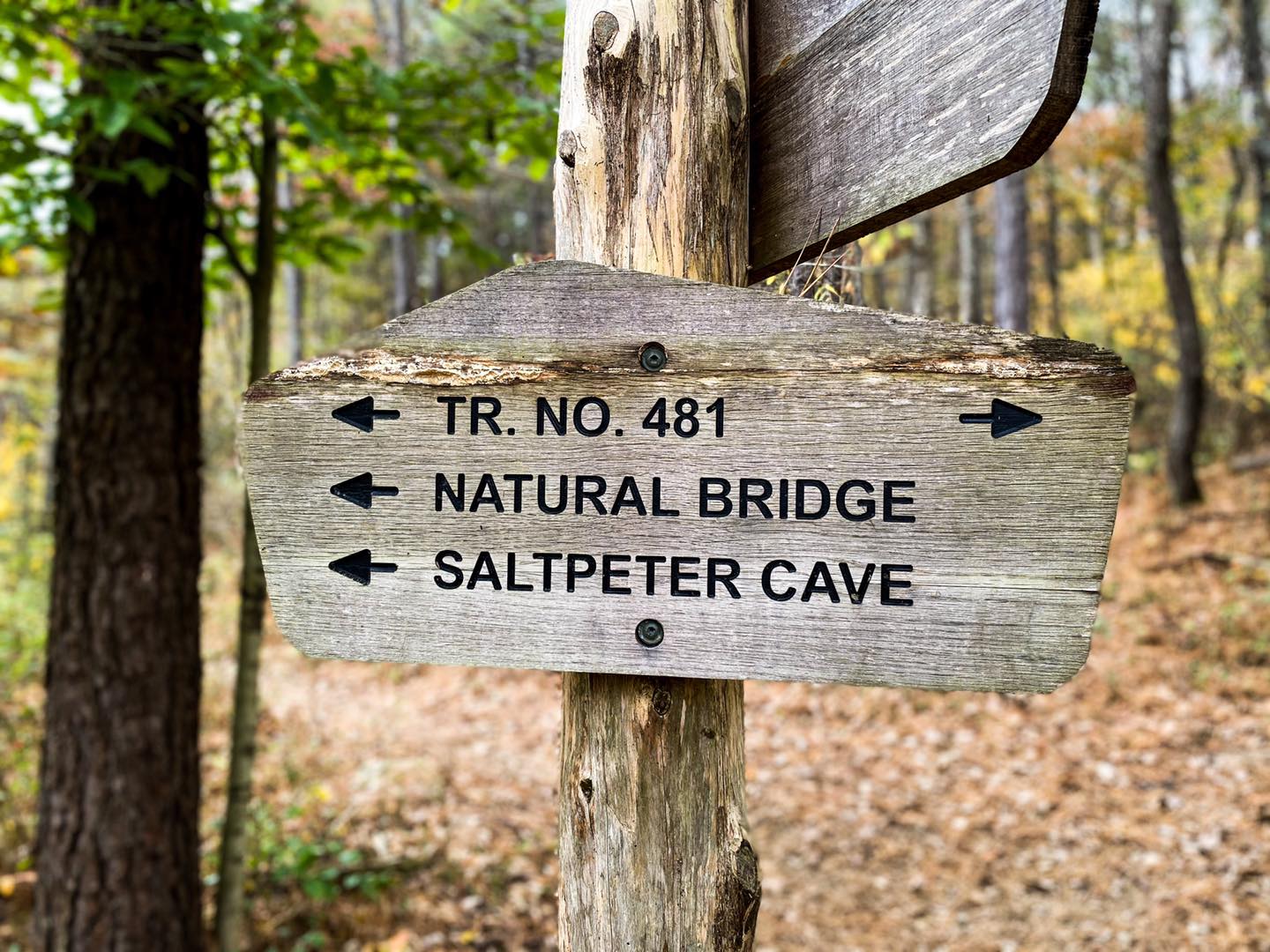How to Prepare for a Hiking Trip the Right Way
It’s important to prepare for a hiking trip before you go.
If you don’t prepare, it can be a bad trip. You could get hurt. You could get stranded. You could have a bad enough experience that you never want to go hiking again.
You don’t want anything negative to happen on your hike, right?
A simple planning process will help you prepare for a hiking trip and enjoy every bit of it.
Prevent Mistakes When You Prepare for a Hiking Trip
When you prepare for a hiking trip, you prevent mistakes from happening.
Preparedness prevents issues like getting lost, hiking on a too-difficult trail, or even hiking when the weather is supposed to be bad.
It’s better to be prepared than not prepared at all.
Most people who get into accidents while hiking are never prepared for their hiking trips to begin with. That isn’t a good thing. It can truly ruin your love for hiking. You don’t want that.
Hiking is good for you. It’s healthy. You just have to do it right and be planning before you go. And this guide is all about helping you do just that.
Choose the Best Hiking Destination for Your Needs
Research different spots before choosing an area you want to hike. This will help you determine what trail is best for you based on what you can do and what you want to see.
Consider the difficulty of the trail and your ability to hike it. An easy trail is for beginners. A moderate trail is going to require hiking experience and some fitness. A difficult or rugged trail will be for expert hikers with great physical fitness. Hiking on a trail harder than your fitness level will likely be a bad trip from start to finish.
Choose a good location to start hiking. Is it safe for you to hike alone? You should consider bringing a friend just to be safe. Is it safe for you to leave your vehicle? Is there a parking lot? Is the trail good to hike during the warmer months? Is the trail maintained? Choose the best hiking location to meet your needs.
Are permits required for the trail you wish to hike at? If so, get the permits before you go. Some permits are based on a lottery system, and that means you might not be able to get them. If you don’t get permits in areas requiring them, you could be in trouble. Your vehicle could be towed. You might get a citation. You could be arrested or even banned from the area.
How will the weather impact your hiking experience? Are there creek or stream crossings? If yes, will cross after the area gets a lot of rain be too dangerous? How about the trail itself? Will it be exceptionally muddy after the rain? Are there a lot of rocks that could be dangerous if conditions are icy? Ensure you understand how the weather will affect your experience as you prepare for a hiking trip.
Plan Your Hiking Route
Maps will help you navigate the trail you wish to hike. You need to find and take maps of the trail system with you. But you also need to understand how to read the maps. Some maps require map reading knowledge to use them.
Trail guides are also a great way to understand how the trail will be. Trail guides can be very useful. I create free online trail guides for the Shawnee National Forest. Trail guides usually share local amenities and other places to hike, too.
Online resources are always available for trails in most cases. You might find these on websites, social media groups, discussion forums, and even sites like Reddit and Quora. Reading the comments on trail apps and guides might also be an idea.
The elevation is an important factor in preparing for a hiking trip. The more elevation gain will mean the hillier the hike will be. Hilly hikes are harder to hike and will require more hydration and fuel. The more gear you carry, it might be even harder to hike it.
Points of interest are another factor you should consider when preparing for a hiking trip. You want to see cool stuff on your hike, right? But sometimes, cool stuff is on harder hikes, so you need to keep that in mind. Sometimes people choose hard hikes without researching them, and there is nothing to see along the way.
Train for Your Hiking Trip
The best way to train for hiking is to start out on easy trails. When an easy trail has become too easy, you can move up to a moderately difficult one. Hike those trails for a while until you can move up to harder ones. Gradually increase the difficulty as you can for a better experience.
Go for walks daily. They don’t have to be on hiking trails. You can walk around the block several times or in your local park. Walking is great exercise and will help you as a hiker. You can also wear a loaded-down backpack on your walks to get better at hiking.
Go for bike rides routinely. Cycling helps build strength and muscles that are essential for hiking. Biking up hills will make you a better hiker when you experience steeper and hillier conditions. Make sure you choose a safe biking route and always wear a helmet for your own safety.
Cardio fitness is one of the best ways to become a stronger hiker. You can work out at a gym, go to spin class, run, or even trail run. Swimming is also a great way to strengthen your muscles for hiking. You should add cardio exercise to your daily routine. Check with your doctor first to ensure it is a healthy choice to exercise.
Stretching will greatly assist you with being a better hiker. Stretch when you’ve warmed up a bit after a few miles of hiking. It will help alleviate pain, wake you up, and refresh you. You might even consider doing yoga to help keep you stretched out and fit for hiking.
Choose the Right Hiking Gear and Check It First
Choose a backpack that is made for hiking. A normal backpack will be a bad choice because it’s not made to wear for long periods in a rugged environment. A good hiking backpack has ventilation, different ways to adjust the pack, and a good source of pockets. Do a backpack fit test before choosing the best one for you.
Wear appropriate hiking clothing such as hiking-specific pants or shorts (or pants that zip off into shorts), shirts, and hiking boots or shoes. In some cases, athletic apparel like leggings and bike shorts are fine as long as they’re not made with cotton. Cotton holds in moisture and makes you uncomfortable. During colder hikes, practice layering up for the best results.
Navigation gear is important to take. This includes any apps for your phone. Bring a power brick and charger if you need to charge your phone. Bring additional navigation sources such as a map, a compass (try to learn how to use them first), and even a GPS unit. A personal locator beacon (PLB) might also be a good idea.
Hydration and food are important to bring. Your water should be your heaviest item. Bring enough water to last a few days just in case you got lost or hurt and can’t return. Bring snacks loaded with carbs that don’t require refrigeration, such as trail mix, bars, and jerky. Bring a water filter with you but ensure it works before using it.
Other essential items include a first aid kit, a roll of toilet paper, any medications you take, a folding saw, a multi-tool gear repair kit, and overnight gear if needed. Bring some extra layers and a rain jacket just in case you need it.
Hiking Trail Safety Considerations
Wildlife encounters may be a safety consideration on your hike. Are there any predator animals such as bears, wolves, and mountain lions? How about venomous snakes or alligators? Research to understand what you do if you encounter such wildlife.
Steep terrain and cliffs are typical dangers associated with most hiking trips. Try to get an understanding of how steep the trails will be. Cliffs, bluffs, and mountains are also hazards that are important to know about. Are there any creeks, rivers, or streams you must cross? It’s a good idea to understand the lay of the land.
Weather and wildfire dangers are important safety considerations to take note of. How will the weather be during your hike? You should never hike in severe weather conditions. Is there a wildfire danger at all? Make sure nothing is closed because of weather or fire dangers.
Make sure the area you’re going to isn’t a party spot. Where there are partiers, there are typically heavy drinking, drugs, and potentially criminal activities. You don’t want to go anywhere where a lot of crime takes place. Your vehicle could be broken into or damaged.
Dehydration is a common hazard that occurs on the hiking trail. You have to make sure you bring enough water with you. You might need to bring electrolytes with you just in case you need more than just plain water. Are there enough spots for you to filter water as needed?
Choose a Designated Safety Person
Make sure to designate someone to be your lifeline.
This person needs to have a map of where you will be, a full itinerary, and when you plan to return from your hiking trip.
If something happens and you don’t return, this person will contact emergency services on your behalf and report you missing.
The information they provide will be critical for search and rescue efforts.
Now you know how to thoroughly prepare for a hiking trip using the above recommendations. It’s your turn to put them to use. You’ll learn more about preparing for a hike each time you go for a hike. You’ll figure out easier ways of doing things. If you’ve enjoyed this post and would like to support me in writing it, please leave me a small donation to help pay for the hosting of this blog. Be sure to subscribe to my free newsletter to get even more hiking tips delivered to your inbox every month.
Please Support Hiking with Shawn
Alrighty folks, I hope you have enjoyed this content. I provide it for free and it takes a while to create. If you would be so kind enough to support my efforts, you can do so by sharing this post with others, especially on social media. Be sure to subscribe to my YouTube Channel to see my latest videos, shorts and live streams. Follow me on Facebook, Instagram, Twitter and TikTok for unique content that you will only find on those pages. You might also join my Southern Illinois Hiking & Outdoor Resources Group on Facebook, too!
You can also support me by becoming a Patreon Supporter for as little as $3/month and you can cancel anytime (no contracts or catches). Patreons get access to extra features, exclusive articles, sticker packs, gifts and more. Consider buying official Hiking with Shawn Merchandise as another way to support me. I spend a lot of money on Hiking with Shawn and because of extremely high public land permit fees, I make very little money in return so everything helps.
Thanks again for checking out another one of my articles and until next time, I’ll see you on the trail!

Shawn Gossman
Founder, Hiking with Shawn
Howdy folks! My name is Shawn Gossman and I founded Hiking with Shawn. I’m an avid hiker, cyclist and outdoorsman here in the Shawnee National Forest. I was born and raised in Southern Illinois and never want to leave. Click here to learn more about Shawn Gossman


